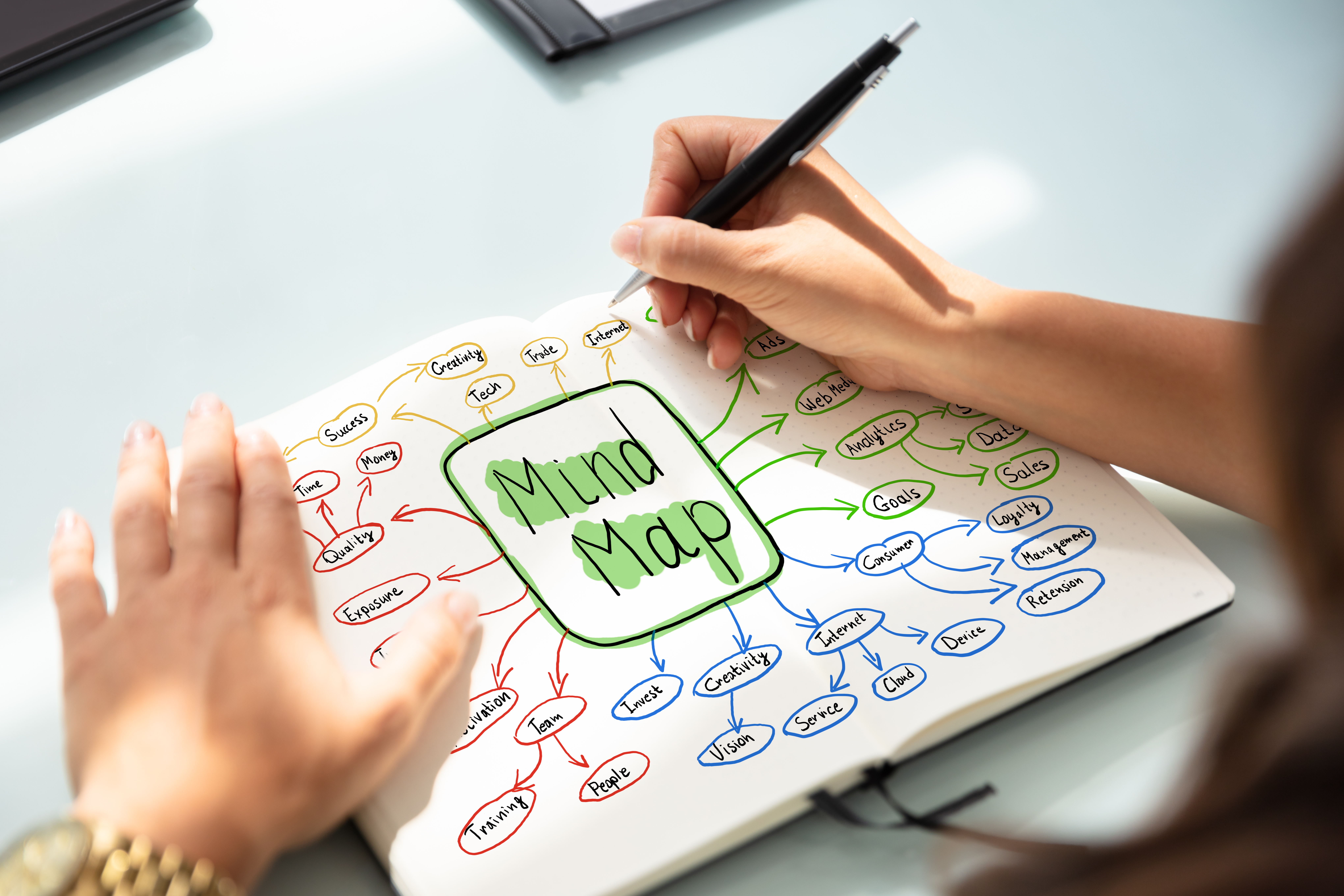The effect that a teacher has on their students is undeniable. They shape the character of their students, and make a significant contribution to their future. There are countless tales of great teacher stories that attest to the benefits of a strong relationship between an educator and a pupil. However, teaching is not for the faint of heart. It is full of challenges. Keeping your students attentive inside the classroom is one of them.
Digital Learning Tools

Source: Pixabay
Nowadays, students aged six and above know how to browse the Internet, use apps, play online games etc. They live in a fast-paced, ever-changing digital world, and that world influences what they pay attention to, and how they learn. This means, as an instructor, you need to develop teaching methods that will resonate with students on a more techie level. Digital learning tools like the mind map maker and word counter boost student engagement and motivate students to immerse themselves in learning.
Prominent schools like the Deffrey Vale High School in the United Kingdom regularly use the word count tool and mind maps to help students develop essential skills like thinking, collaboration, communication, creativity, and digital literacy. But it doesn’t happen like magic. There is a special method behind each tool.
Mind Map

Image from Adobe Stock
In order to get to each method, we need to study each tool individually, which is what we will do, beginning with the mind map. When you first heard the word “mind map tool,” you probably thought it sounded like something straight out of a sci-fi movie. That isn’t completely wrong. In a mind map, as opposed to conventional note-taking or linear text, knowledge is organized in a way that is far closer to how the brain actually functions. Isn’t that pretty amazing?
Mind mapping, how to mind map, the process of creating a mind map, is an activity that is both intellectual and imaginative, it engages the brain in a much, much richer way, helping in all its cognitive functions. So, what exactly IS a Mind Map? It’s a very simple tool, actually. Its power lies in its simplicity. Are you surprised to hear that?
What Is A Mind Map?
In essence, the mind map is a diagram used to visually organize details. It is often based on a single concept, drawn as an image in the center of a blank page, to which associated representations of ideas such as images, words, and parts of words are added.
Benefits Of Mind Maps
Now that we know what mind maps are, and what they’re made of, let’s delve into the different ways teachers use mind maps with their students.
1. Learning New Concepts
Students have to constantly learn new concepts and apply them. But you don’t want them to simply memorize facts, dates, and phrases. You want them to understand what they are reading, to grasp the concepts you present to them, so that they can apply them later in life.
A mind map can be created to depict how a concept breaks down into its parts, what the parts mean, and the parts are related to one another. This approach helps students learn new things in ways that make sense to them. When this happens, they’re able to retain information over a longer period of time, making it a highly effective study technique.
To explain things better, we will be including one or two mind map examples under each benefit, beginning with this one: let’s say, in science class, students learn about climate change and global warming for the first time.
Global warming is the main concept, and underneath the main topic are the “branches,” with the words, “Cause,” “Effect,” and “Hindrances.” Underneath Cause is a sub-branch titled, Greenhouse Gases. Under Greenhouse Gases are the words, “Animal Farming,” and “Vehicles.” Under “Animal Farming,” are the words, “Release Of Methane.”
Meanwhile, under the words “Effect,” is the phrase, “Rising Temperatures.” Below “Rising Temperatures,” are the words, “Melting Glaciers,” and “Weather Irregularities,” as subtopics.
Finally, under the last branch, “Hindrances,” are the words. “Conspiracy theorists,” “illegal loggers,” etc.
2. Creative Form Of Self-Expression
When students utilize mind mapping, they express themselves in an unstructured way, even if they’re working on something straightforward. Activities that aren’t inherently thrilling for students, such as making an outline, are a lot more enjoyable for them, when they are encouraged to be creative.
How can they be creative in making mind maps? For example, they can color the words in their diagrams, draw images next to the branches, or use free online tools like Coolors or ColourLOVERS to try out different color palettes.
Do you have a student who doesn’t draw? No problem! If a student doesn’t like to draw, they can create a mind map template on Microsoft PowerPoint, or download a Mind Map online. TemplateLab.com, Canva, Edraw, are a few of the top Mind Map sites you can download for free.
iMindQ, another superb online mind map maker, divides their mind map templates into three major categories – Business, Education, and Personal Use. One click on the Education tab will bring you to a number of cool Mind Map templates for every student situation – there’s a Mind Map to help you master a subject, prepare for an exam, help you take class notes, etc.
3. Connection To Other Online Resources
One of the benefits of a digital mind map is that it can provide connections to other online sources. It can link to websites that contain more information. Teachers can do the same thing, as well, but with a twist. The mind map they’ll be doing will serve as a visual reference library that can be constantly added to as the students learn more and more about the topic.
4. Improve Note-Taking Skills
Conventional note-taking is challenging for most students. How to decide what to write down and what to leave out? Is it better to copy what’s on the board, or to listen to what the teacher says?
Mind mapping as a way of taking notes helps to organize various ideas and to connect things together much faster. It allows students to prioritize information and to create a hierarchy from that information.
5. Better Your Memory
Students need to remember what they learn, and mind mapping helps with that. When you mind map, the technique forces you to actively process your thoughts, and transfers those thoughts to your long term memory.
Furthermore, when you create mind maps, you move elements around, and this activity is very good for your brain. Moving elements around encourages your brain to think of new ideas, and helps divert circular thinking, which is what happens when we allow our thinking to run in circles.
6. Effective Literature Studying Process
Usually, reading poetry, short stories, and novels allows students to grasp a broad variety of concepts and ideas. Keeping track of characters, metaphors, and motifs might not be easy for some students. Mind mapping helps students visualize the connection between metaphors, characters, contexts, and other important story elements.
7. Easy Way To Create Essay Outlines
It takes some planning to put together an essay, and that can be overwhelming for some students. When a student uses a mind map, it helps break down large ideas into specific topics, arguments, and supporting points. Mind mapping also makes it a lot easier to compare related arguments, and keep those arguments from overlapping.
8. Alternative Way To Prepare For Tests
Whether it’s studying for Math, English, or History, a mind map can help organize concepts and topics. Creating a visual collection of study notes helps reinforce the essentials behind the subject, etc.
9. Helps Set Goals And Solve Problems
Students can use Mind maps to help solve problems. These issues may be difficulties they face in completing homework, maintaining focus during class or at home, sticking to a routine, etc. Mind mapping helps them see a problem better, the pros and cons to a certain solution, etc. Providing students with the autonomy to solve their own problems will help enhance their leadership skills.
Word Counter
Let’s move on to our second learning tool, the word counter. A word counter is a handy online app used to count words, letters, phrases, and paragraphs in real-time, along with grammar and spelling. If you are a student, having a word counter by your side can definitely help you with your schoolwork.
Students are expected to produce essays, term papers, and book reports with precise word counts. Although a little leeway is normally provided, if you’re way off count, you might get a lower grade. What a waste of time and effort, right? You won’t have that problem with the word count tool by your side. On the other hand, teachers use the word count tool to check their students’ exams, and to make sure their students are within the provided word count.
Online Educational Tools
Technology has rooted its way into our day-to-day existence, from homes, to offices to classrooms. Long gone are the times of thumbing through an Encyclopedia for research. With information at the tips of our fingers, learning through the use of digital tools is boundless.
In fact, you’ll find many mind mapping tools and word count tools online, but you won’t find many sites that offer BOTH. Despite the site’s name, Word Count Tool offers more than just a word counter. The site’s a Mind Map Tool, Character Counter, Pomodoro Timer, Scrabble Word Finder AND Word Counter rolled into one! You don’t need to go anywhere to enhance your learning skills, everything you need is at Word Count Tool!
Plus, the tools are so very easy to use! If you need to organize, summarize, and visualize your thoughts for a test, program, or event, Word Count Tool’s Mind Map tool will make your planning effortless. And once you’re done, you can even share your mind map on all your social media accounts, or with your friends!
How To Use Mind Map Tool On Word Count Tool
We break down the steps below:
- Click on the blue button on the left side of the screen to add a node.
- If you want to add an image node, tap the NEW IMAGE NODE beside the ADD Node button.
- Want to change your node? Tap either the EDIT NODE or REMOVE NODE button. It’s that easy!
- After adding your nodes, if you’d like to change the color of your nodes and text according to your style, just tap the TEXT COLOR BUTTON below the five major blue buttons.
- When you’re done adding and editing your nodes, don’t forget to click on the SAVE FILE button at the bottom of the box.
- You can download your mind map to share with your friends. Either download your map as an image, or in .jm format. If you want to save your work on the site, to work on it another night, we recommend you save your file in .jm format.
- Congratulations, you are done!
Final Thoughts
Technology is now part of people’s lives, and it has contributed to many improvements – both in how we think and how we learn. But some classrooms and some teachers are not as willing to accept technological breakthroughs in the field of education. However, even if they fight the tide of change, that doesn’t mean they’re going to be able to stop it. It will happen whether they like it or not. In fact, it is already happening.
In some schools, individual education is already being practiced – students listen to recorded lectures at home and are no longer part of online or physical classroom settings. Learners lose sight of interpersonal aspects of the learning process and are alienated from other learners. No matter how you look at it, it is not a healthy way to get an education.
Students need to learn and practice the values of empathy, and love, and compassion. They need to accurately learn how to interpret other people’s behaviors, and effectively navigate social situations. But how will they be able to do that if they don’t even know how to interact with other people?
To prevent that from happening, teachers need to learn how to use the educational tools the technological age has brought us, and we need to support our teachers in any way we can. The future of our youth, our kids, our grandchildren, and our great-grandchildren is at stake.

